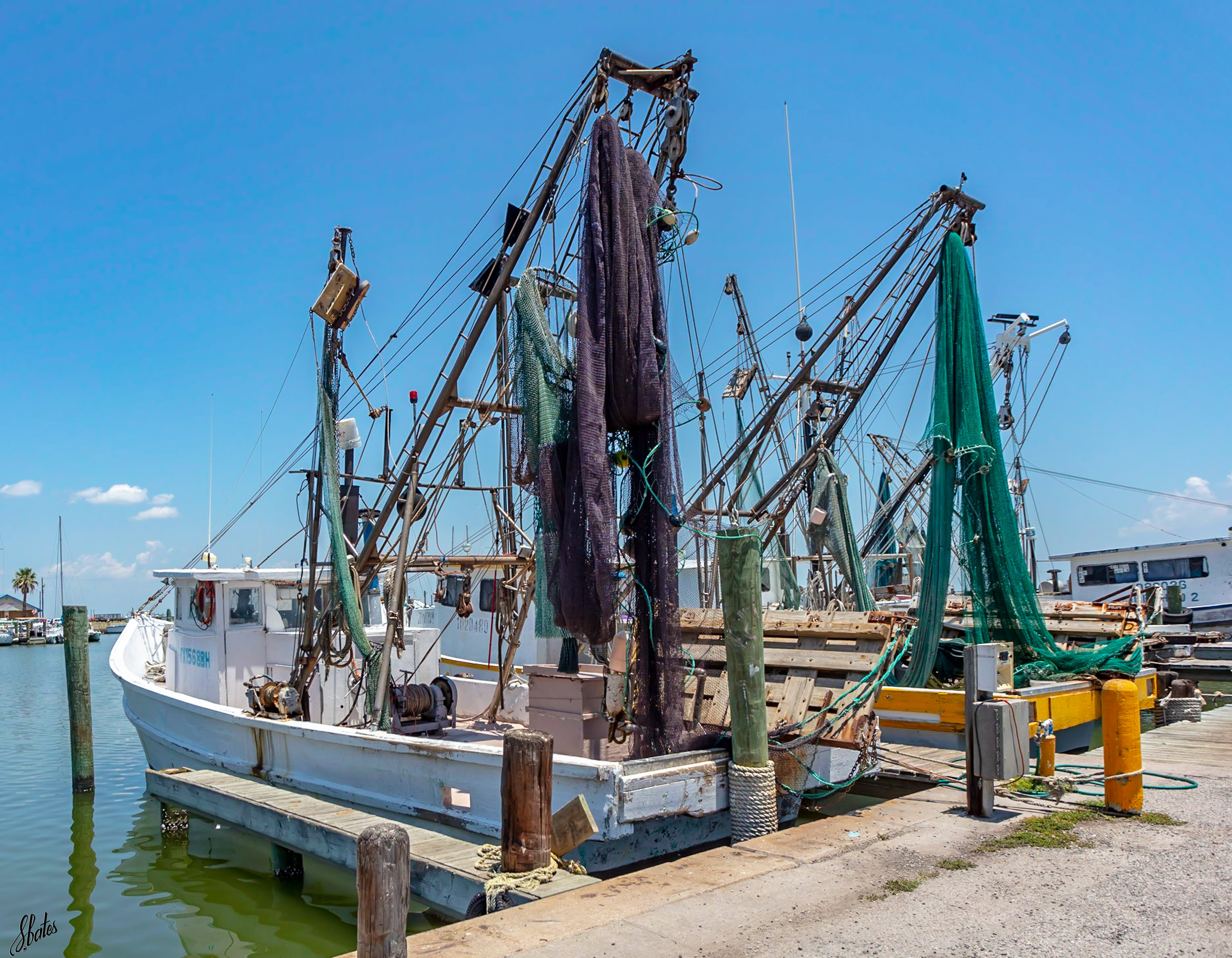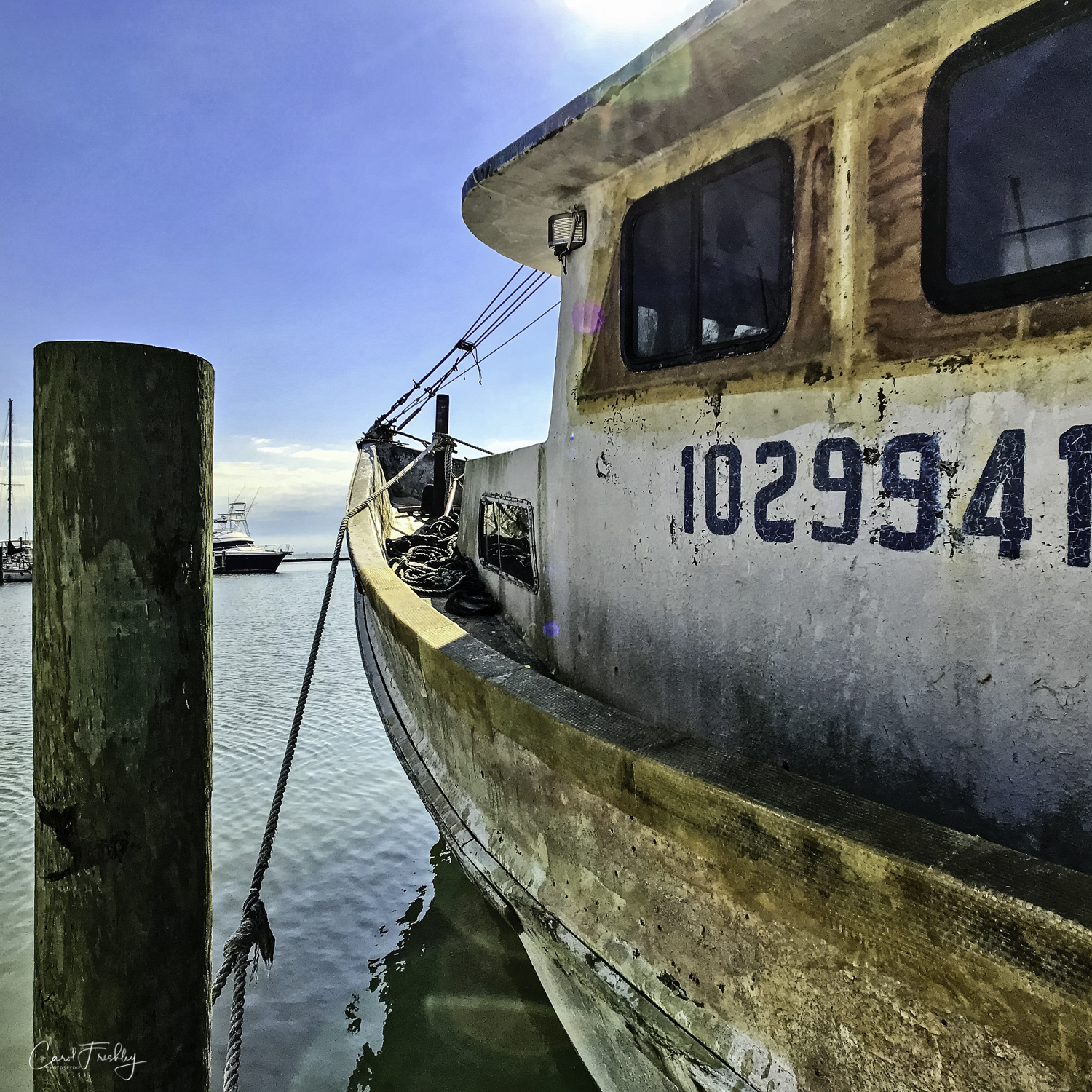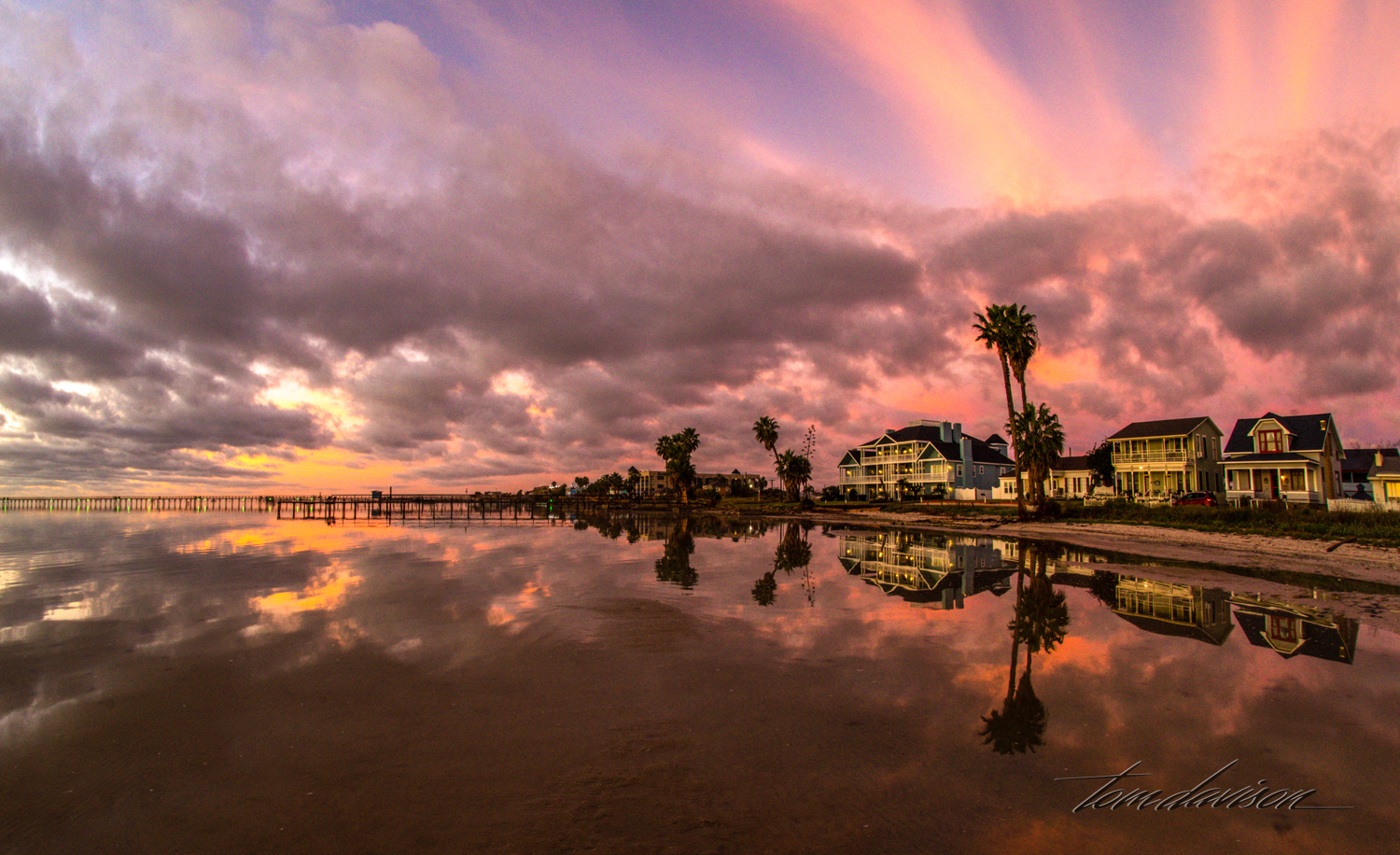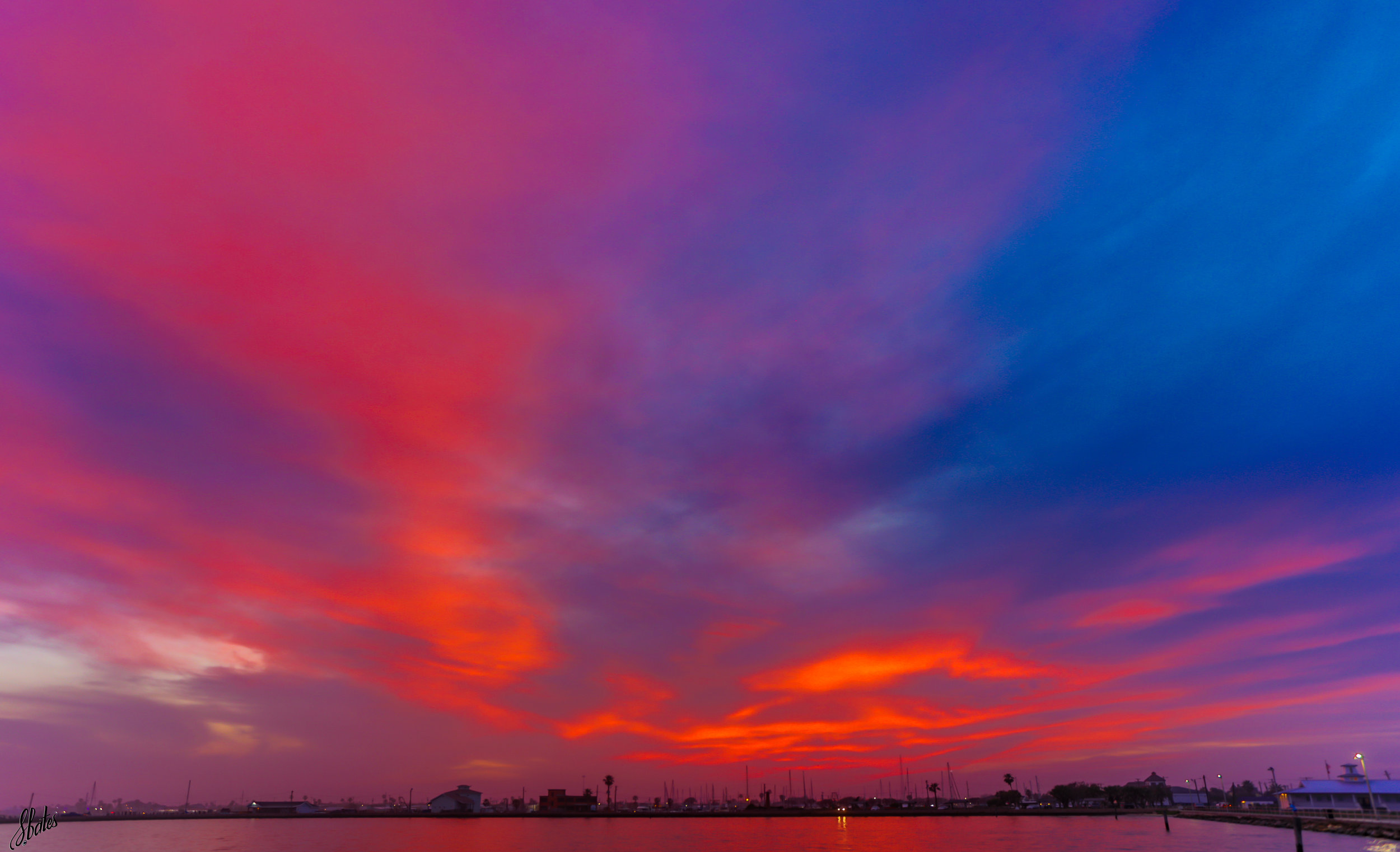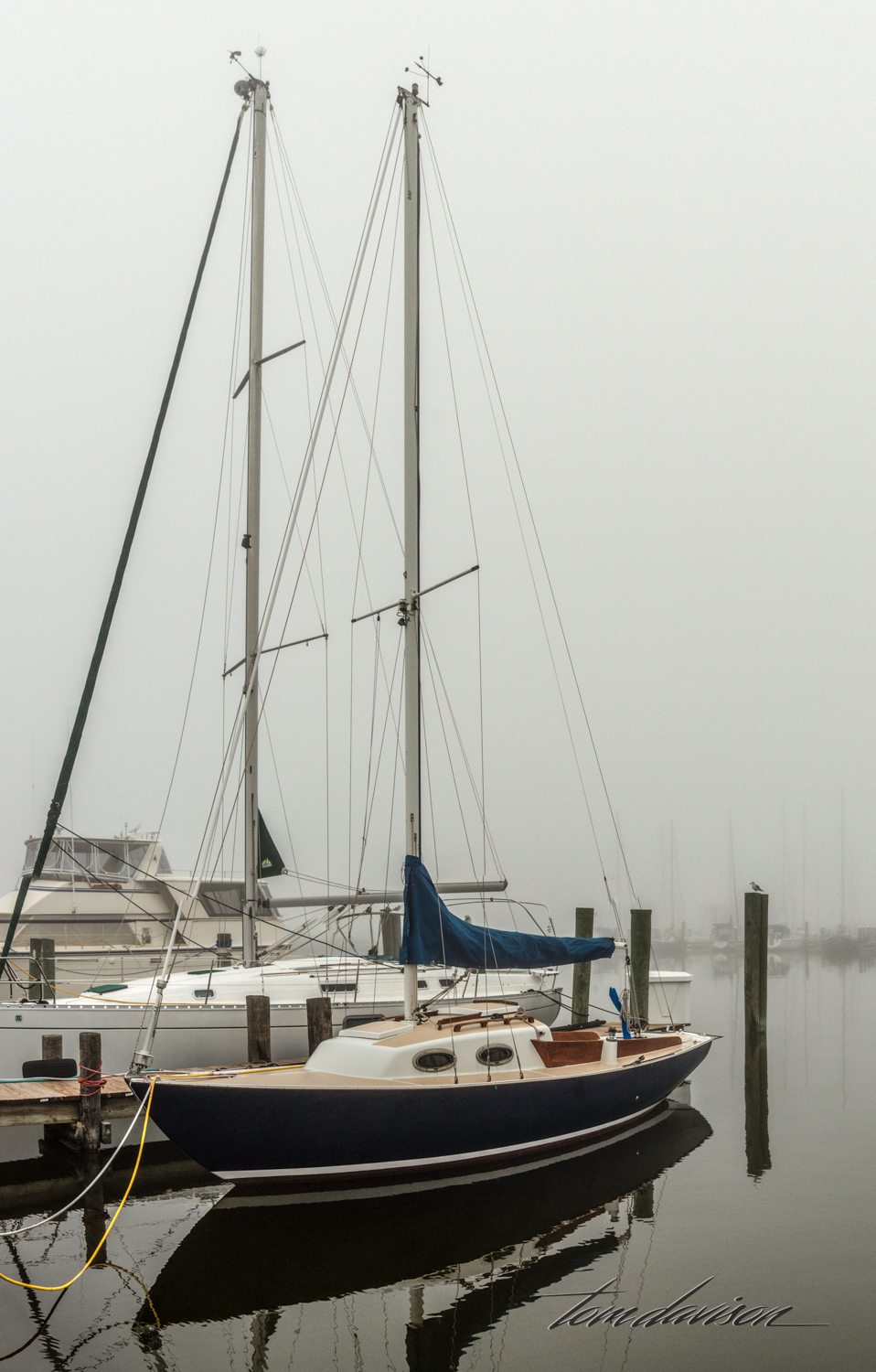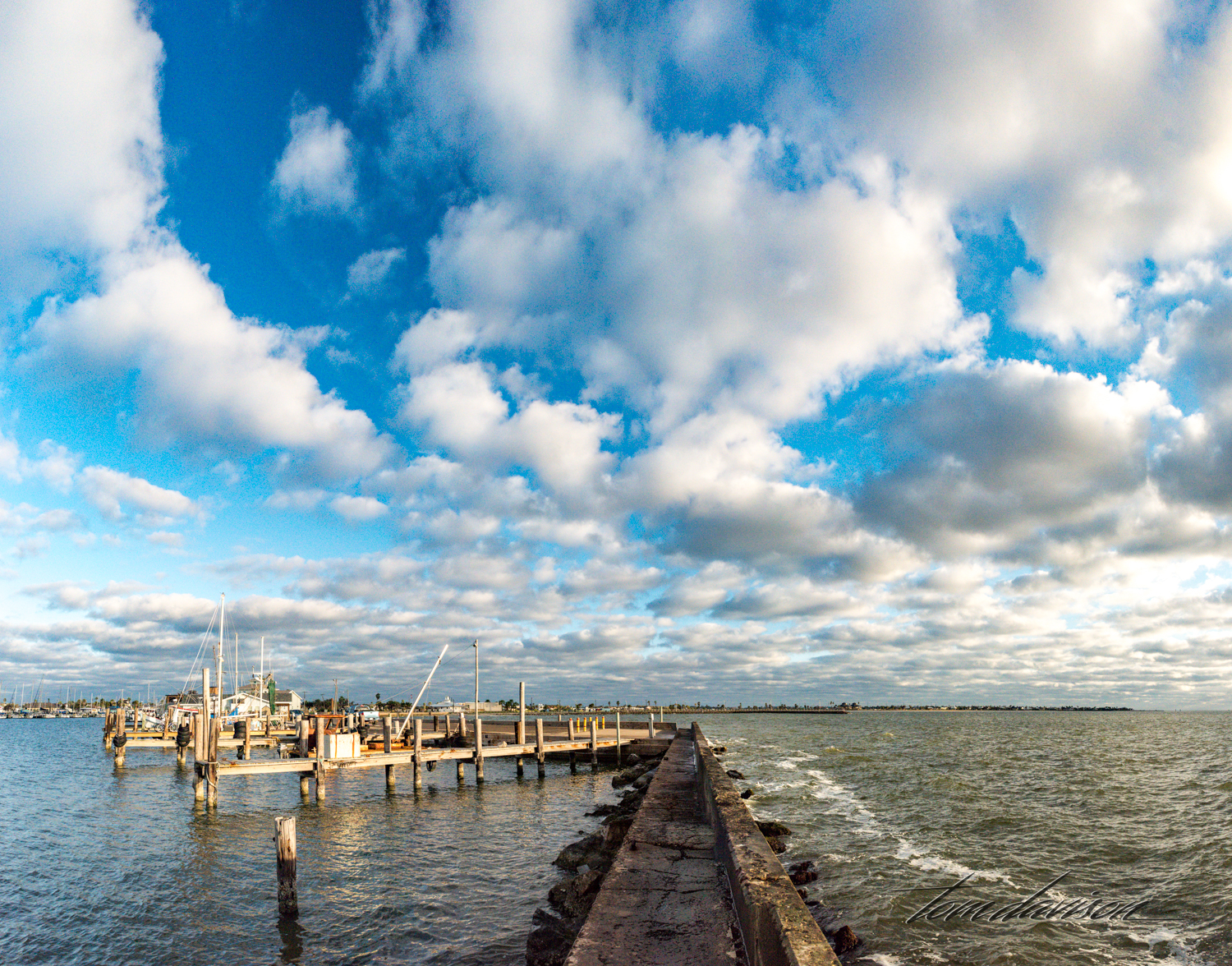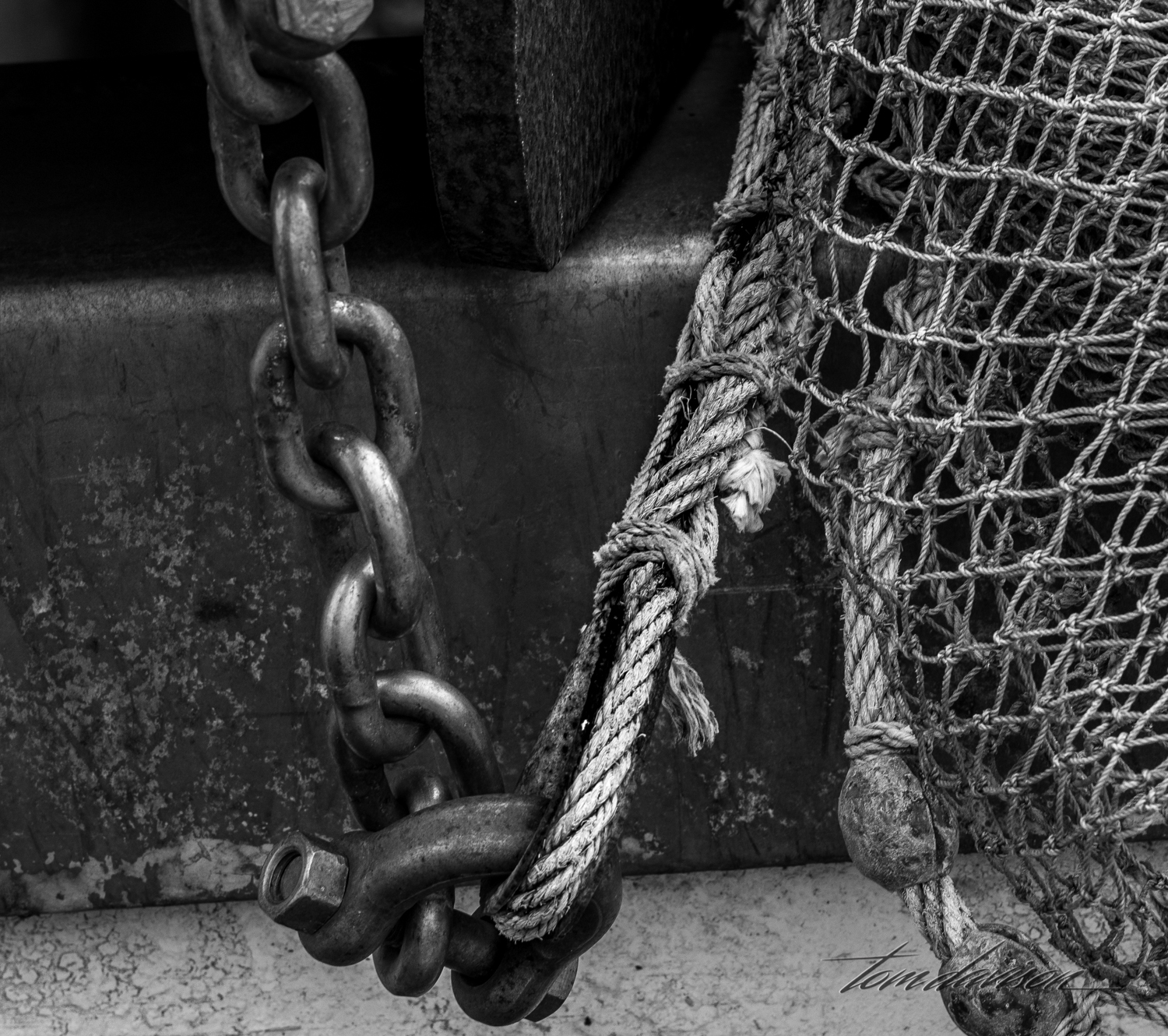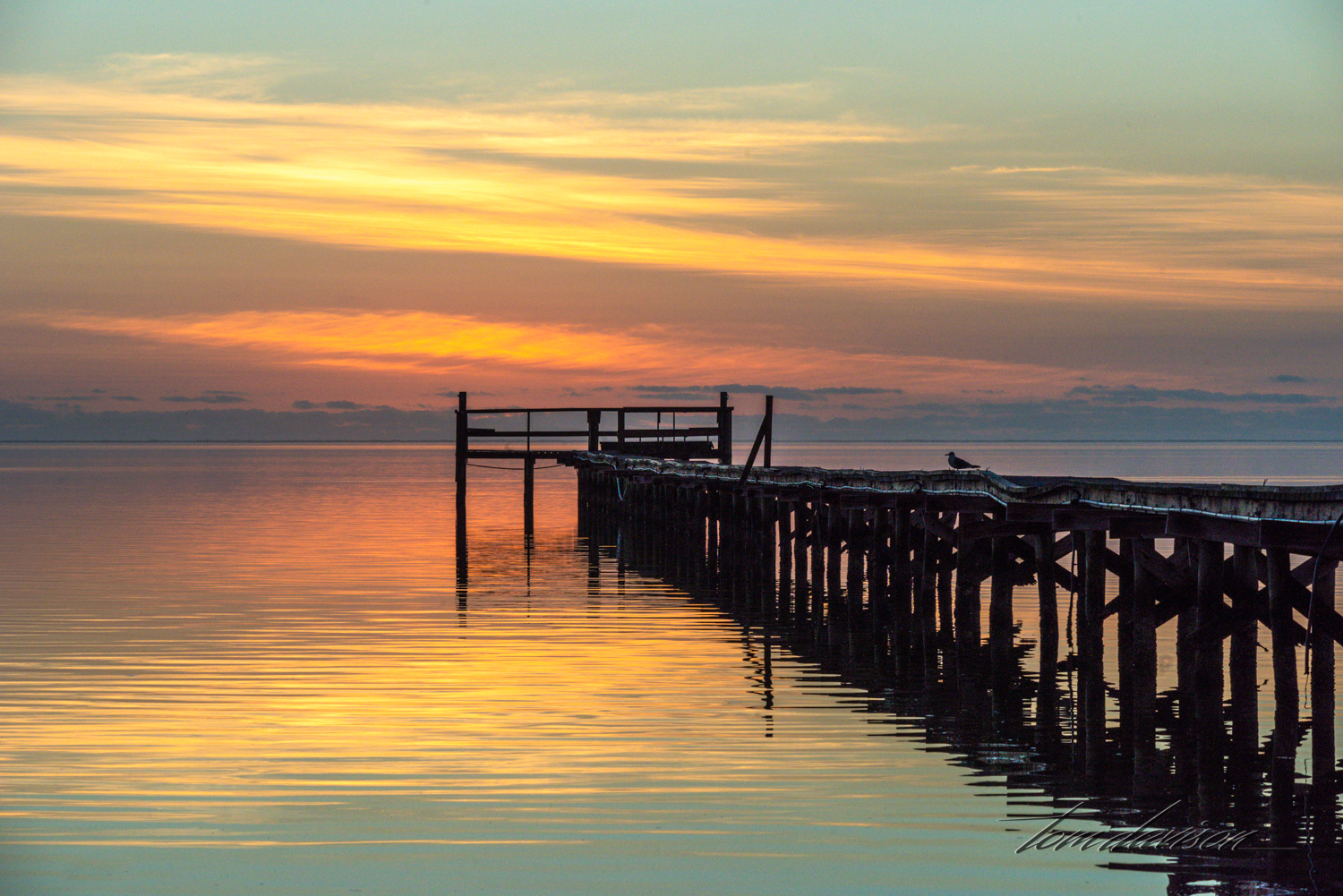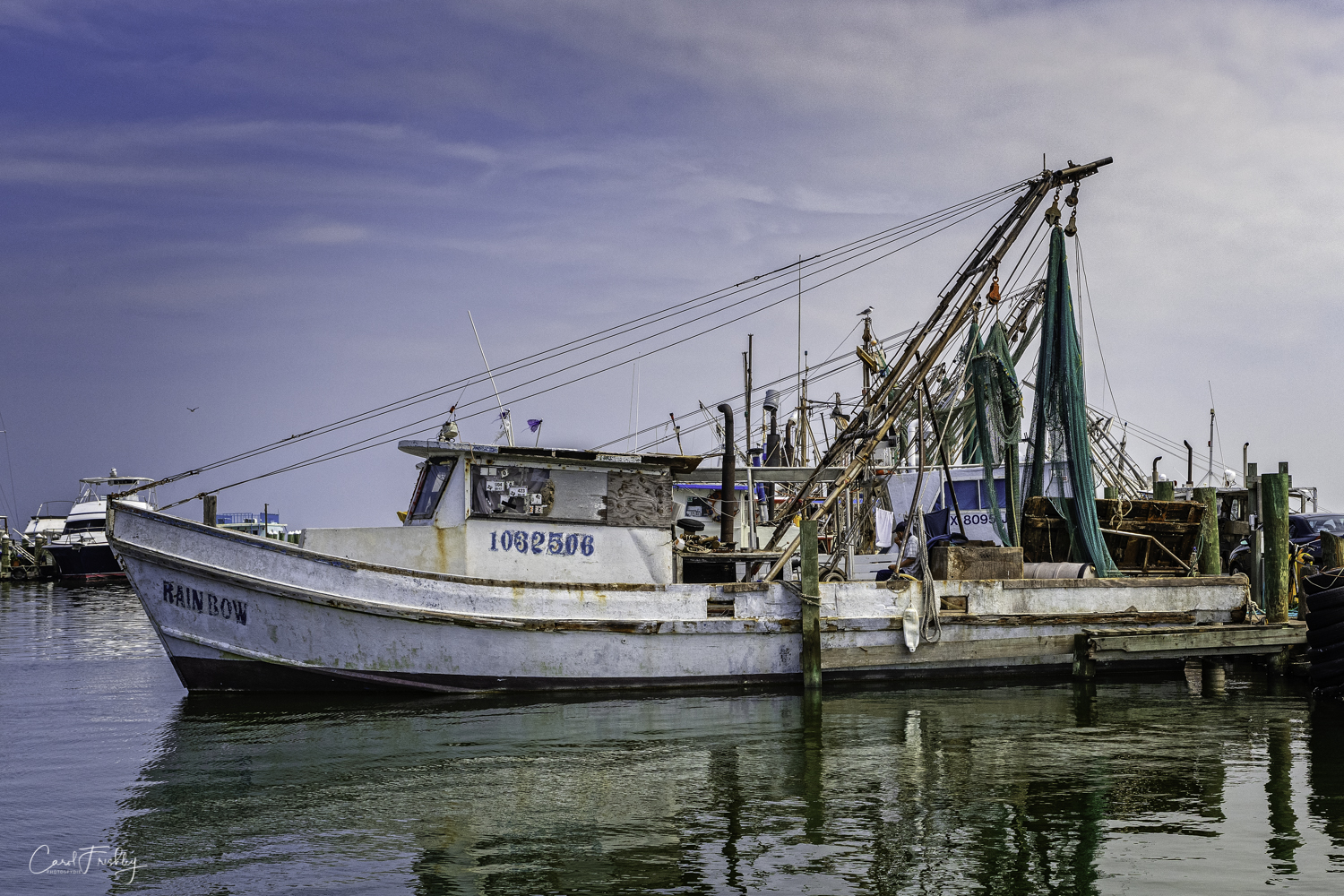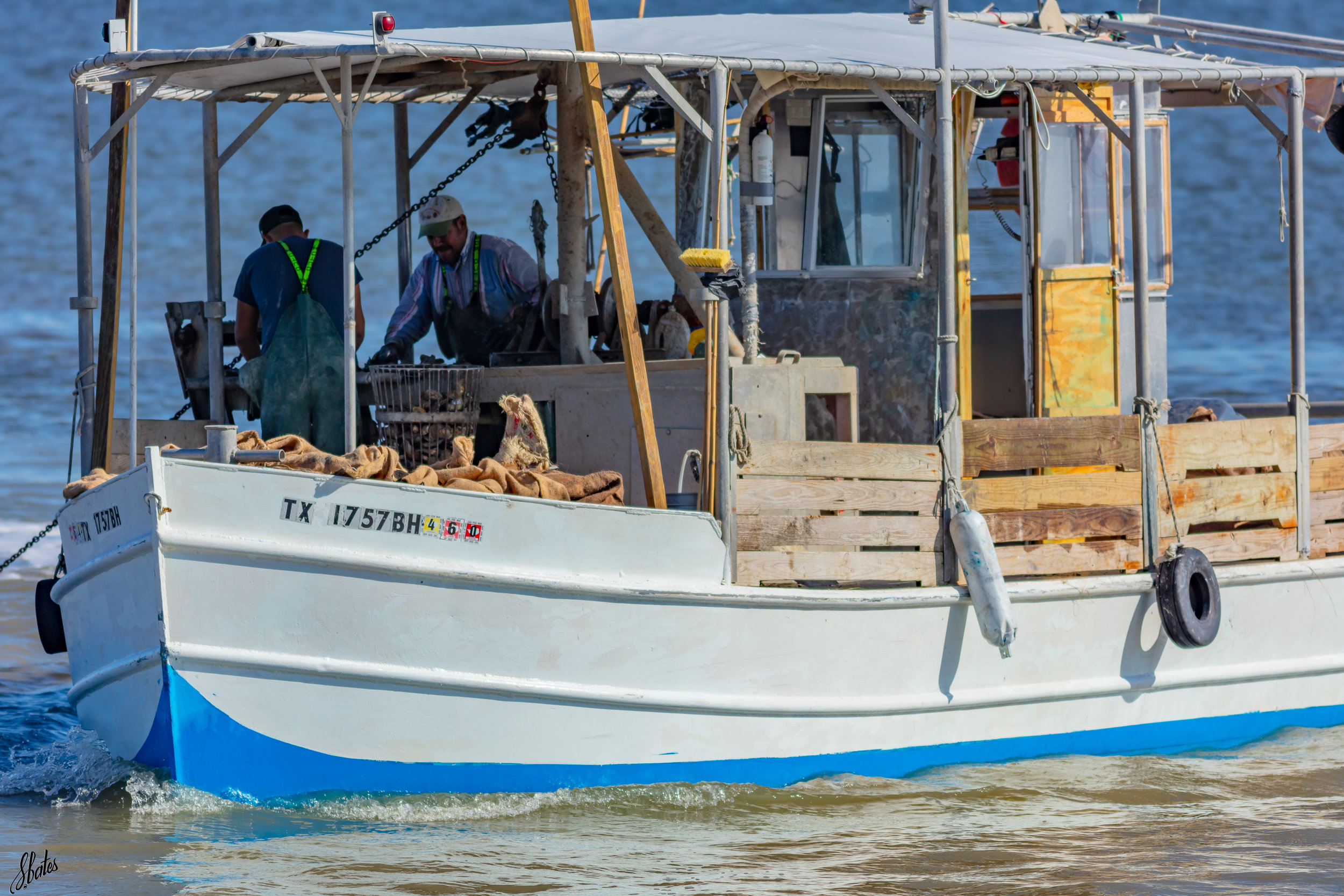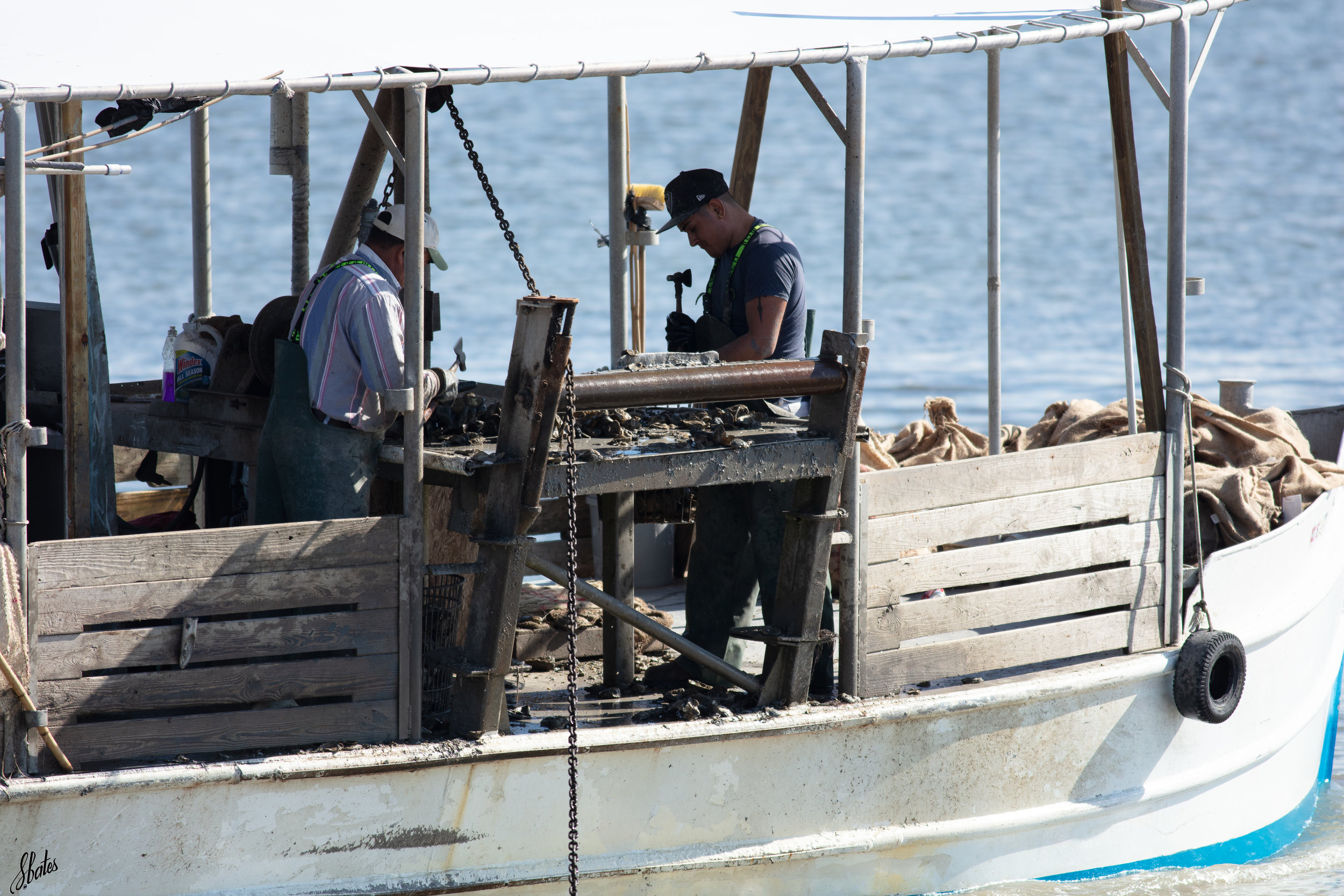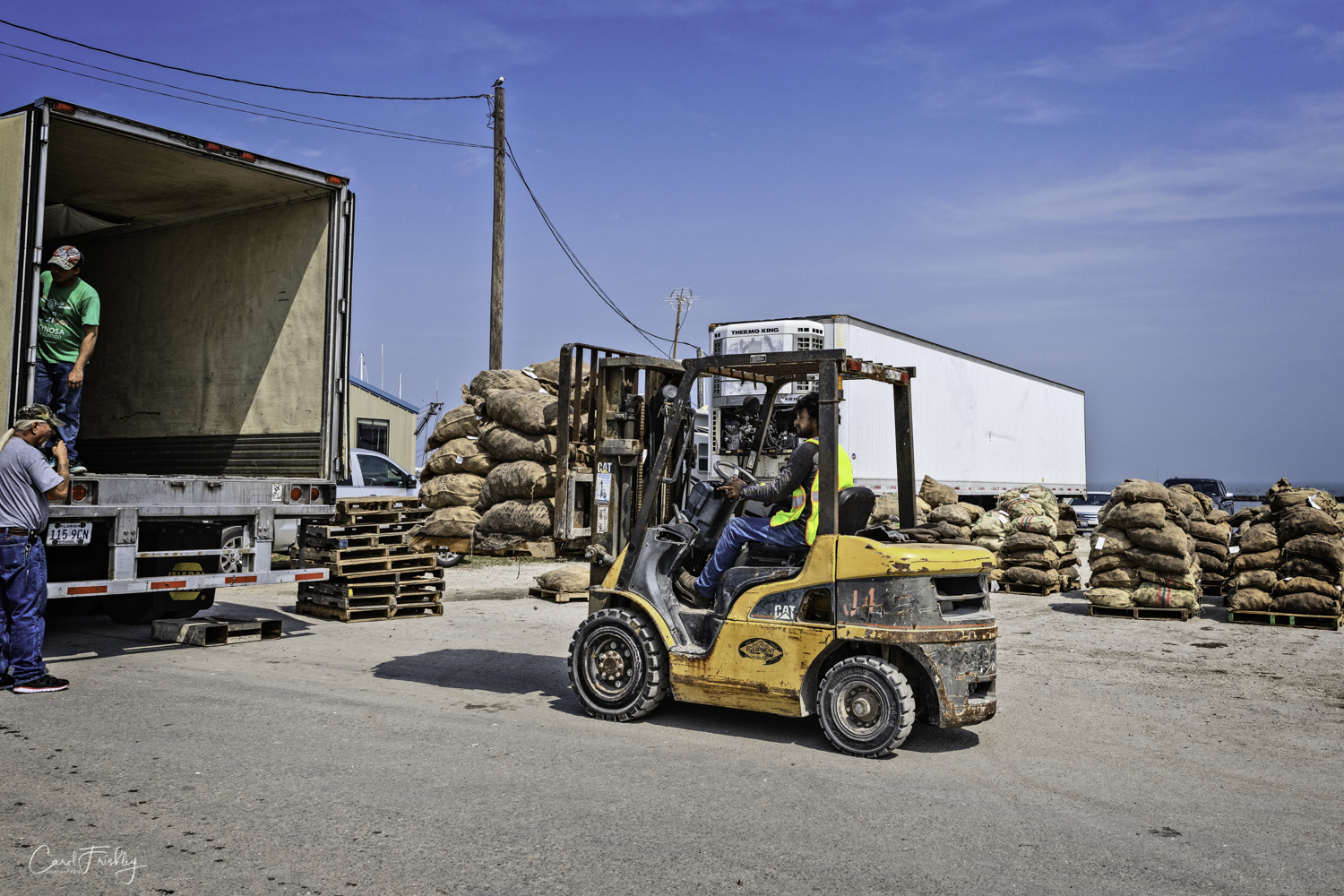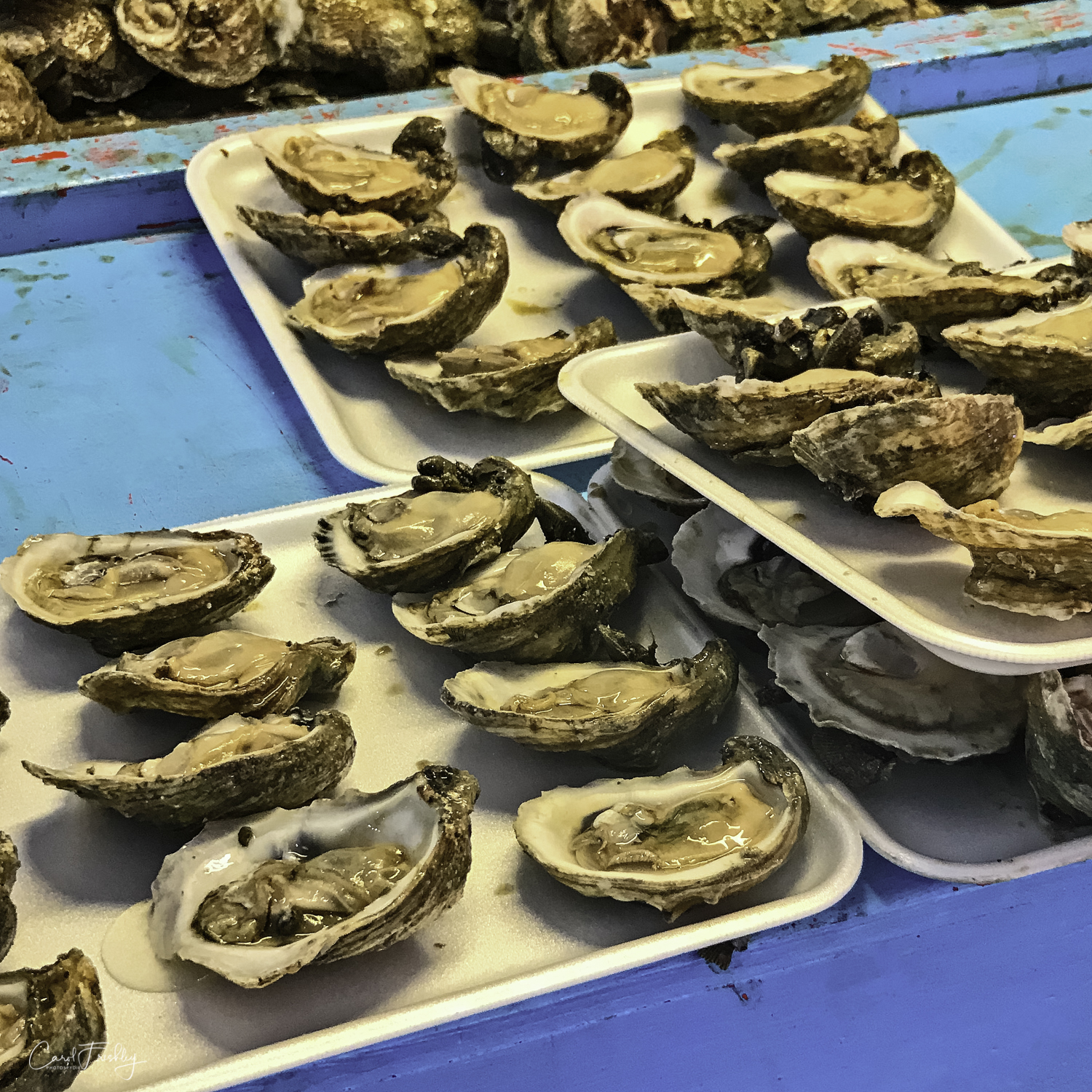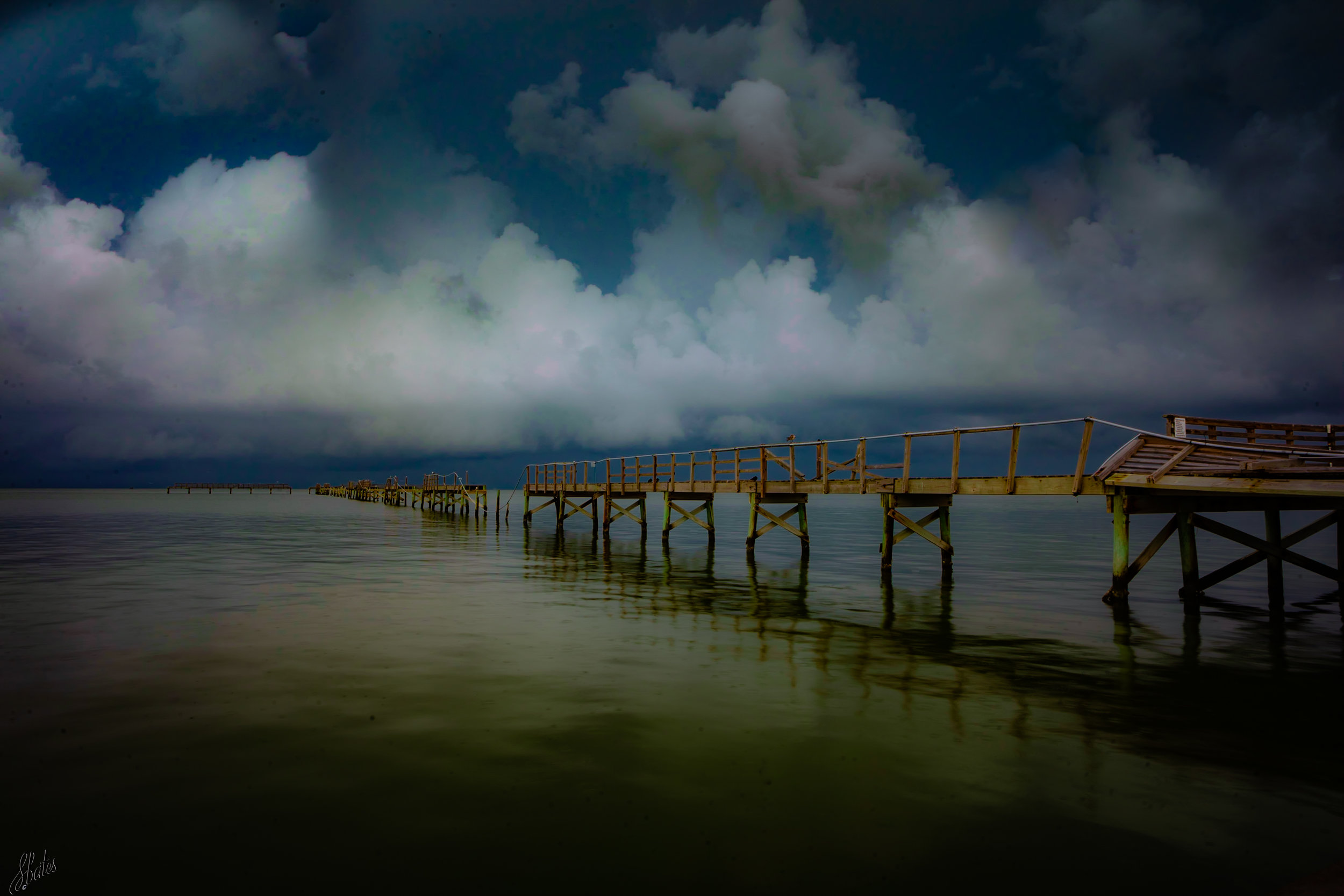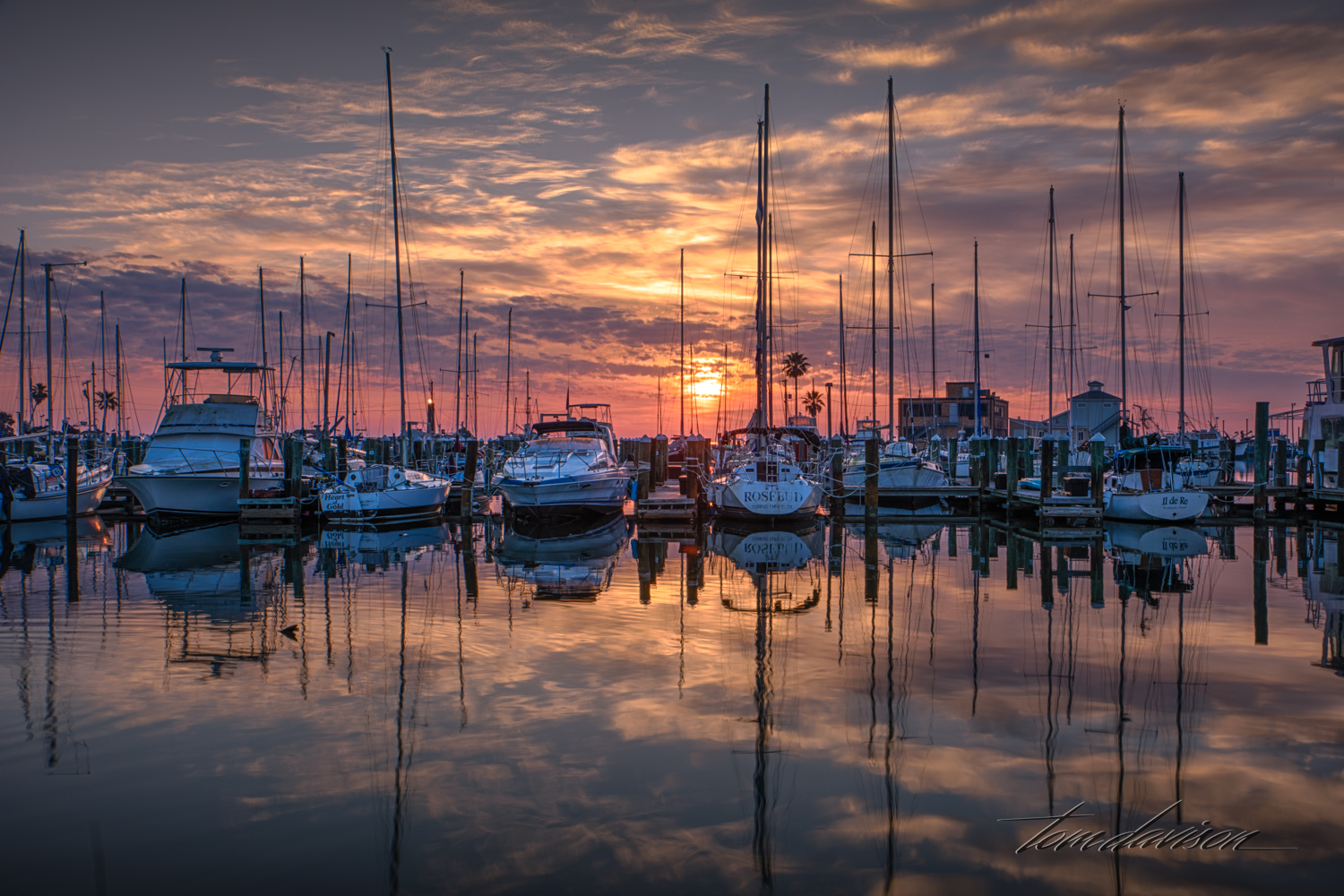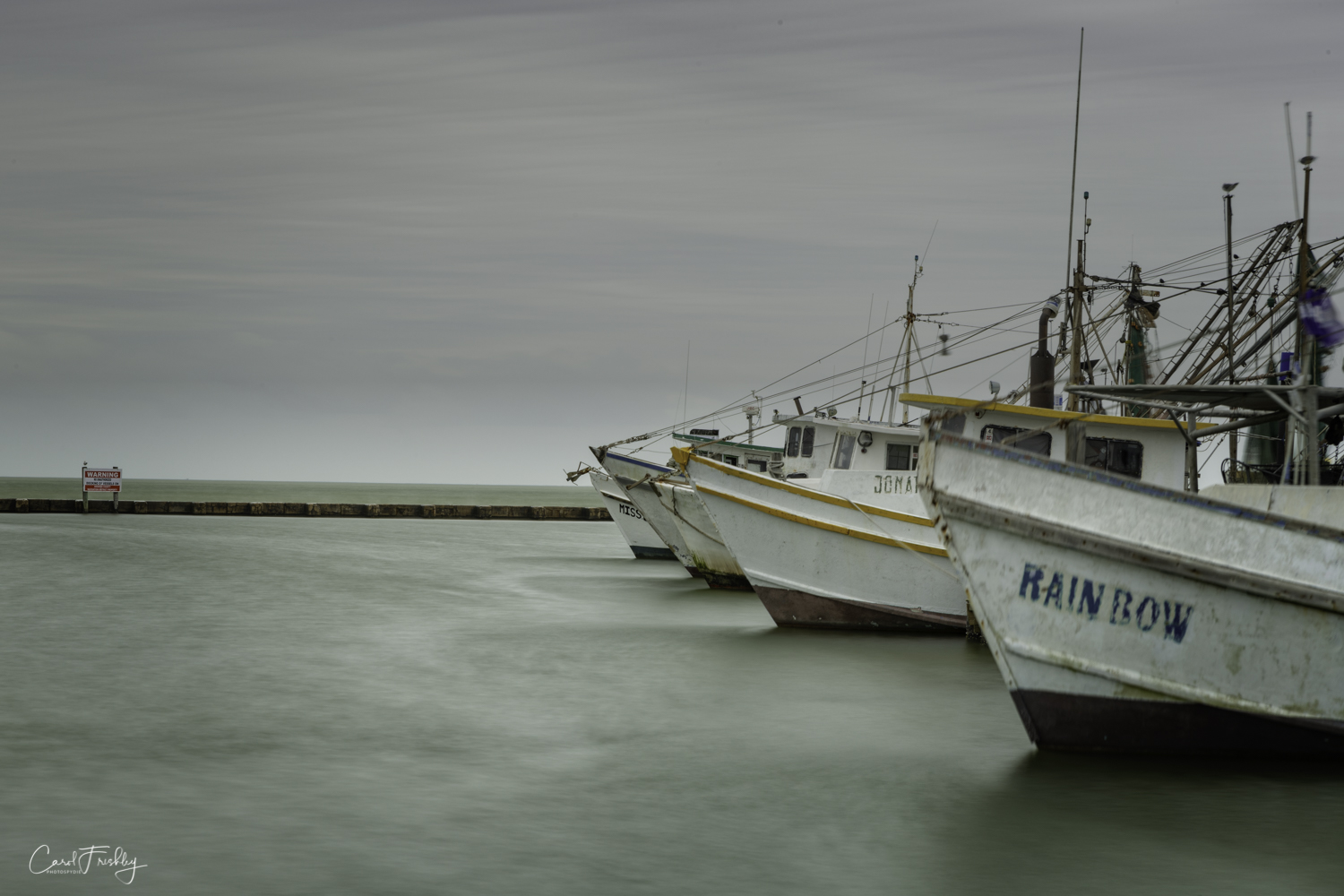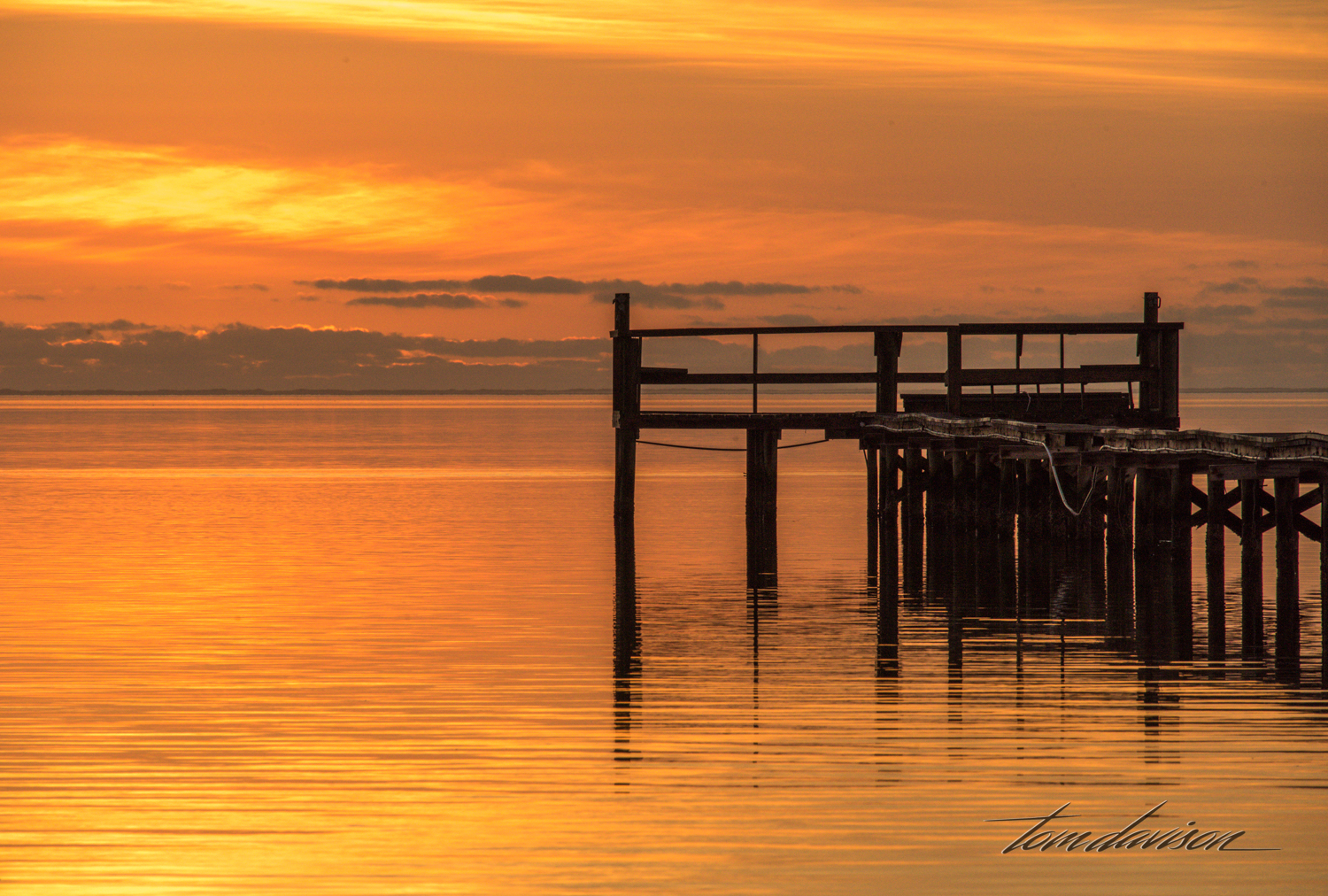Rockport got its name from the rock ledge that runs along the shore of bay. Its main economic drivers are tourism, shipping, and fishing. We have been here for three months and spent many hours at various marinas and scouted out interesting piers. Here the marinas are filled primarily with what we call ‘working’ boats. Very few boats are fancy. Boats go out to dredge for oysters and then when the shrimping season opens they trade their dredging buckets for shrimping nets. Both activities are highly regulated and areas where either oysters or shrimp can be harvested are limited and the quantities are also restricted. Both industries have suffered major setbacks in the past few decades from the effects of flooding (too much fresh water dumped in the bay), pollution such as oil spills and then hurricanes! On August 25, 2017, Hurricane Harvey made landfall over Rockport. The devastation was horrific! While some areas in Rockport are fully recovered there are many areas where one sees destruction that can only be attributed to a major hurricane.
There were not nearly enough sunsets to suit us. But this one, with the marina as a foreground, was a keeper.
Just about every time we went out to photograph the piers we saw people fishing.
This old boat is still working. There is not enough money in oysters and shrimp to allow owners to spend money making them ‘pretty’. If it floats, a boat is put to work!
There are a few pleasure boats docked at this marina. Some of them are used as full time homes. No tires, just sails.
This is the USS Enterprise which is now a floating museum just outside of Corpus Christie.
Fog is very common along the shore. Sometimes it burns off by noon, but there are days when it lasts all day.
Dredged oysters are thrown on tables where they are sorted. Undersized and dead oysters are thrown back into the water. Fishermen are fined if they keep too many undersized oysters.
Bags of oysters are loaded into trucks that take them to distribution centers and a market near you.
Every spring an Oyster Festival is held with the proceeds to benefit the Rockport Volunteer Fire Department. theses lovely oysters are shucked as you watch and sell for $1 each. They were very popular, with some folks walking off with a tray of 30!
Hurricane Harvey destroyed every single private pier. You can drive along the coast and see hundreds of piers like this one.
Steve’s take.
Carol’s take. I am smiling because one of the real treats in being here for three months is parking next to my brother and having him stand right next to me and click away. Difference? He uses Canon! Hahahahaha!
Tom’s take. Tom’s is a little fishy, don’t you think? Nope, turns out that this is a three photograph pano!
A foggy pier offers a different feel on a cold night.
Rock and cement barriers such as his one offer protection from rough waves, leaving the marinas with smoother water.
These are shrimping nets. The shrimp season starts in November.
We took the ferry across to Padre Island. There, along a deep channel, is a long rock and cement barrier. It is used by fishermen to get out into the gulf and fish.
Oh, look how the sun lights up that bridge!
Juguete caro translates to “Expensive toy.”
Beach foam! I know . . . .
This area is known for its live oak trees. This is a decent representation of the trees here, some even withstood Hurricane Harvey.



